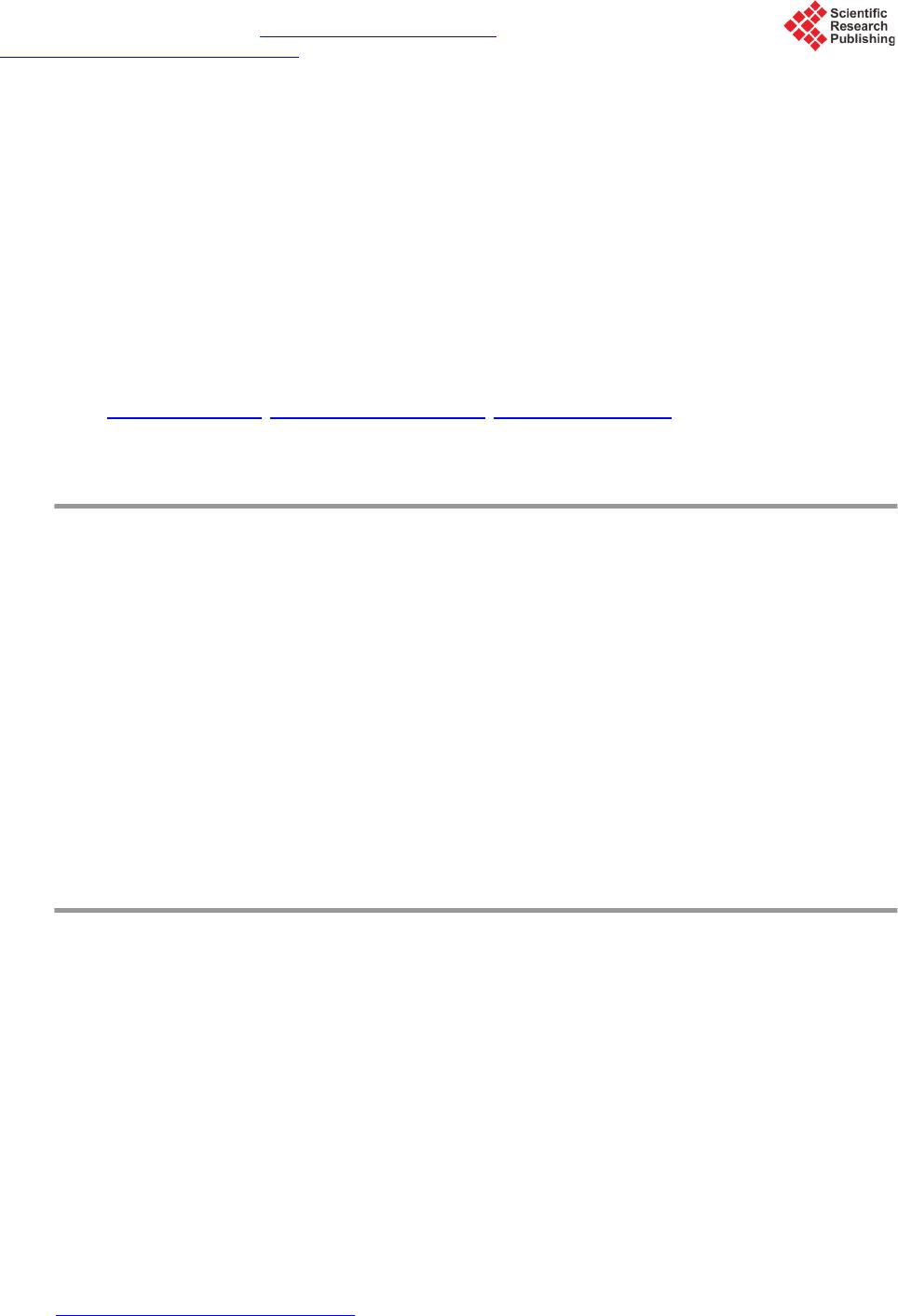
Int. J. Communications, Network and System Sciences, 2015, 8, 58-61
Published Online April 2015 in SciRes. http://www.scirp.org/journal/ijcns
http://dx.doi.org/10.4236/ijcns.2015.84007
How to cite this paper: Krishna, P., Kumar, T.A. and Rao, K.K. (2015) Throughput Evaluation of Downlink Multiuser-MIMO
OFDM-LTE System. Int. J. Communications, Network and System Sciences, 8, 58-61.
http://dx.doi.org/10.4236/ijcns.2015.84007
Throughput Evaluation of Downlink
Multiuser-MIMO OFDM-LTE System
Patteti Krishna1, Tipparti Anil Kumar2, Kalithkar Kishan Rao3
1JNT University, Hyderabad, Telangana, India
2Department of ECE, SR Engineering College, Warangal, Telangana, India
3Vaagdevi College of Engineering, Warangal, Telangana, India
Email: kpatteti@gmail.com, tvakumar2000@yahoo.co.in, kishanrao6@gmail.com
Received March 2015
Abstract
Recently, the mobile communication industry is moving rapidly towards long-term evolution (LTE)
systems. LTE aims to provide improved service quality over 3G systems in terms of throughput,
spectral efficiency, latency, and peak data rate, and MIMO technique is one of the key enablers of
the LTE system for achieving these diverse goals. Among several operational modes of MIMO, mul-
tiuser MIMO (MU-MIMO) in which the base station transmits multiple streams to multiple users,
has received much attention as a way for achieving improvement in performance. In this paper we
present a Multiuser MIMO-OFDM-based simulator that includes the main physical layer function-
alities and calculate the throughput of LTE Frequency Division Duplex (FDD) and Time Division
Duplex (TDD) systems. The simulator has been used to evaluate the performance of the 3GPP
Long-Term Evolution (LTE) technology.
Keywords
3GPP LTE, OFDM, MIMO, MU-MIMO, FDD, TDD and Throughput
1. Introduction
LTE is one of the most promising wirelesses-technology platforms for the future. The version being deployed
today is just the beginning of a series of innovations that will increase performance, efficiency, and capabilities.
To address the growing mobile broadband demand, the 3 GPP standards body released the next technological
step, Long Term Evolution (LTE) [1] [2]. LTE is designed to substantially improve end-user throughputs, in-
crease sector capacity and reduce user plane latency. Among many features in the LTE which supports up to
3Gbps throughput in downlink, Multi user multiple-input-multiple-output (MU-MIMO) scheme has been identi-
fied as one of the key enablers for achieving a high spectral efficiency. Both in theory and design perspectives,
MU-MIMO systems have several unique features distinct from single user MIMO (SU-MIMO) systems [3]. To
make up for the shortcomings of SU-MIMO, early LTE [4] standards (Rel. 8 and 9) defined a primitive form of
the MU-MIMO mode. Many of us might have heard about LTE peak throughput is 300 Mbps, but how many of
us know how we calculate that? This paper provides the information, how this number is calculated? In this pa-